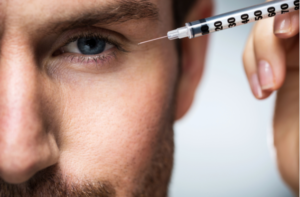 Now we’re two blogs into the breakdown of the American Society of Plastic Surgeons (ASPS) cosmetic procedure statistics for the year 2020. In those first two blogs we talked about the overall decline in surgeries of 14% due to the average 8.1 weeks of office closures during COVID lockdowns. We also detailed some research into views on cosmetic surgery and how women surveyed planned to spend much more in 2021 and beyond. We’ll see how that shakes out when the ASPS releases their 2021 statistics in the coming weeks.
Now we’re two blogs into the breakdown of the American Society of Plastic Surgeons (ASPS) cosmetic procedure statistics for the year 2020. In those first two blogs we talked about the overall decline in surgeries of 14% due to the average 8.1 weeks of office closures during COVID lockdowns. We also detailed some research into views on cosmetic surgery and how women surveyed planned to spend much more in 2021 and beyond. We’ll see how that shakes out when the ASPS releases their 2021 statistics in the coming weeks.
In this Vernal Equinox blog for UMass Memorial, let’s get into the incision-less procedures, the cosmetic minimally invasive procedures from 2020.
Top minimally invasive procedures from 2020
When it comes to minimally invasive aesthetic treatments, there is one thing that is true every single year — Botox (and other botulinum toxin type A brands such as Dysport) reigns supreme. This has been the case every year since Botox received FDA approval for aesthetic use on the upper third of the face in 2002. These neuromodulators (predominantly Botox) dominate the numbers every year.
Here are the top 7 minimally invasive procedures from 2020:
- Botulinum Toxin Type A = 4,401,536, down from 5,043,057 in 2019
- Hyaluronic Acid fillers (Juvéderm, etc.) = 2,619,650, down from 2,878,201 in 2019
- Laser skin resurfacing = 997,245, down from 1,087,887 in 2019
- Chemical peels = 931,473, down from 1,387,607 in 2019
- Intense pulsed light = 827,409, down from 938,263 in 2019
- Laser hair removal = 757,808, down from 1,055,456 in 2019
- Microdermabrasion = 522,693, down from 681,190 in 2019
Overall, minimally invasive procedures were down 16% from 2019. The biggest decline? Non-surgical skin tightening (Ultherapy, Thermage, Pelleve, etc.) was down 44% from 2019.
There you have it, all the cosmetic procedure statistics from 2020. The obvious trend was facial procedures. That makes sense since we were in Zoom meetings and Facetime calls seemingly all the time. And during each one of those our own visage was staring back at us from the corner of the screen the whole time. It appears we took a look at the signs of aging and didn’t like what we saw.
That’s the ASPS surgery stats. Would you like to add to those statistics for 2022? Call us if you’d like to schedule a consultation with any of our six board-certified UMass Memorial plastic surgeons or for information on nonsurgical treatments at (508) 334-5990.




Comments are closed.